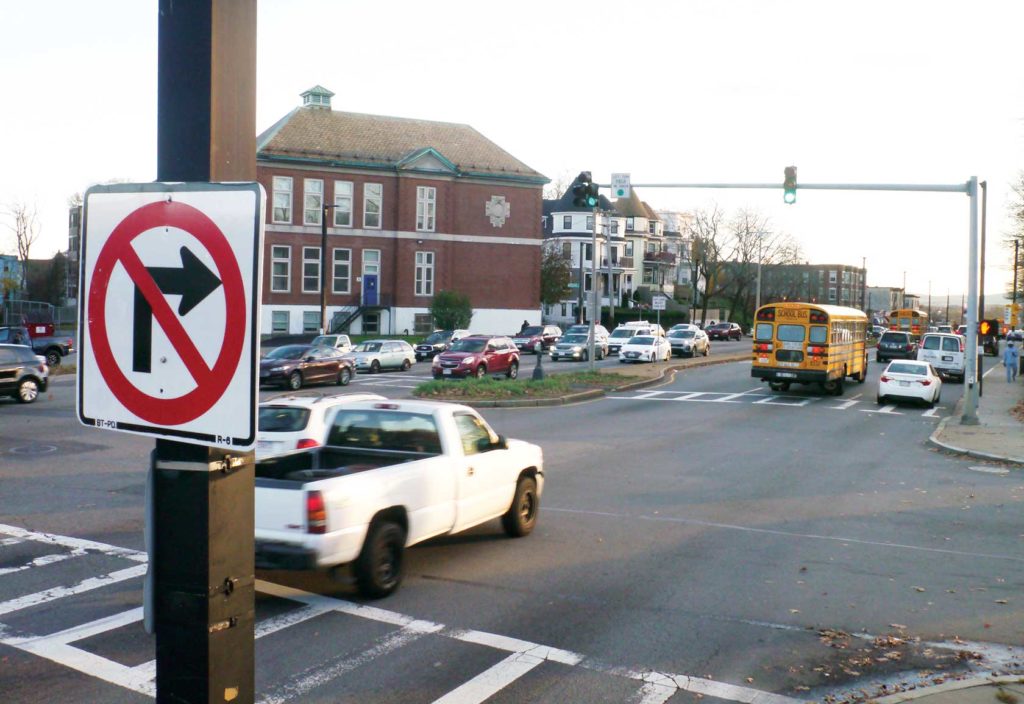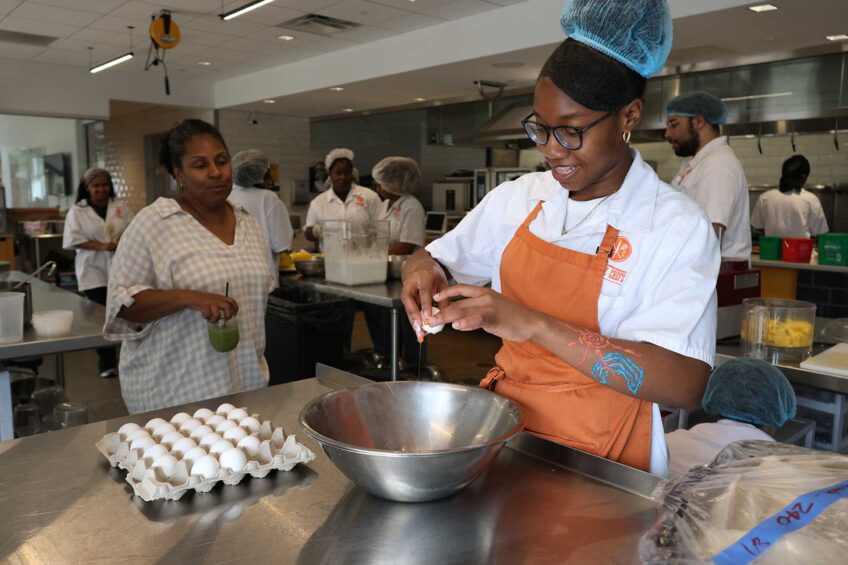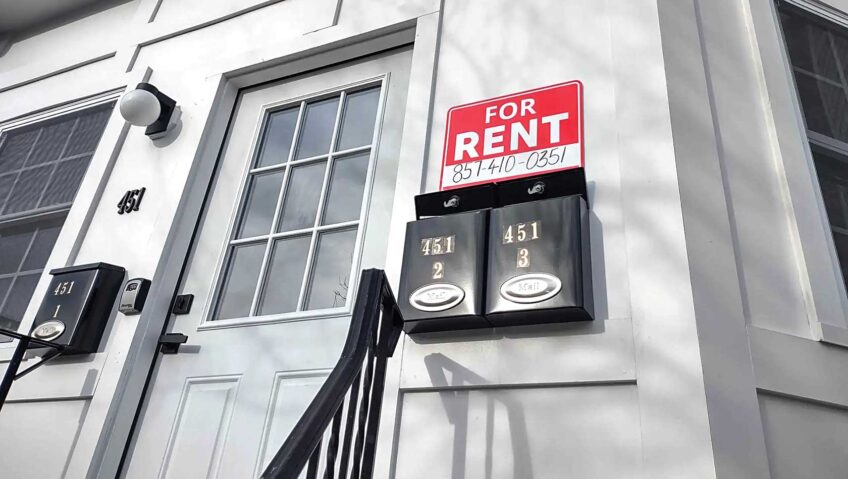Public weighing in on Blue Hill Ave. redesign
City weighing traffic calming, center bus lanes

City officials say they are moving forward with plans for an ambitious redesign of one of the city’s, and the Commonwealth’s, most persistently dangerous roadways: the three-mile stretch of Blue Hill Avenue connecting Mattapan to Dorchester’s Grove Hall.
The project, dubbed the Blue Hill Avenue Transportation Action Plan, represents the corridor’s first significant overhaul in some 70 years, when the avenue was stripped of its commuter streetcar lines and given over entirely to vehicular traffic.
Citing myriad issues, including perpetual gridlock, air pollution, high crash rates, unsafe crosswalks and sluggish bus service, many residents, civic groups and advocacy organizations say change is long overdue. But the effort, still in development, has already provoked backlash. The backlash is coming especially from drivers who have shown up in numbers to recent public meetings to urge against any reduction of traffic lanes — such as might accompany potential plans for center bus lanes. (The corridor carries three major city bus routes.)

The redesign of Blue Hill Avenue will apply to the stretch between Seaver Street and Mattapan Square. BANNER PHOTO
City officials emphasize that no final design has been developed yet, and that a robust public input process is ongoing and will continue into next year — but they are also signaling a willingness to move forward with an ambitious redesign that prioritizes accessibility, and especially safety, for all who traverse the corridor — backlash or no.
In a conversation with the Banner, Chief of Streets Jascha Franklin-Hodge said the city cannot afford to maintain the status quo when it comes to the city’s most problematic corridors — like Blue Hill Avenue.
“Unfortunately, we still have thousands of crashes that happen every year in Boston, severe enough to require EMS dispatch,” Franklin-Hodge said. “Those numbers alone are enough to let us know we have not built streets that are safe enough.”
“What we hear over and over again in every neighborhood in the city,” he said, “is that people don’t feel safe … And what we have [with Blue Hill Avenue] is unfortunately one of the highest-crash corridors in the city.”
Beyond crash rates, Franklin-Hodge cites a slew of other concerns, including many of the ones shared in public meetings and elsewhere by neighborhood organizations and residents who live along Blue Hill Avenue and who must contend with the roadway day and night.
Fatima Ali-Salaam, chair of the Greater Mattapan Neighborhood Council, can easily rattle off some of the challenges the roadway presents: double-parked cars, immobilized buses, ill-conceived intersections, rampant speeding, impossibly daunting crosswalks.
“Some of those crosswalks are as short as 10 seconds! You’ll see the little light start blinking and it’s like, ‘Hey, what happened?!’” notes Ali-Salaam.
At the heart of all those problems, Ali-Salaam says, is a reality that will require more than tweaks to the roadway — Blue Hill Avenue has become a de facto urban highway, an artery carrying huge volumes of traffic through the neighborhoods it traverses.
“We have seven major corridors that go through Mattapan,” says Ali-Salaam. “When we say the traffic comes through, it really does.”
And she notes, “Most of the traffic going down Blue Hill does not originate within the city,” but from outlying suburbs to the south.
Community process
Ali-Salaam’s group has not taken an official position on what changes should look like – and she sympathizes with various anxieties being brought to the table.
“The one stipulation we had” in agreeing to be part of the city’s public input process, she says, “is that whatever the outcome was, it had to go through a true community process … because long-term, once something is done, whatever the city and the state come up with, we’re the ones who end up living with it.”
She adds, “We want to make sure that it is a space that is not just a pass-through. You want to make it comfortable for people, [so they] feel safe crossing the street, feel safe on the sidewalk, feel safe driving.”
Still, online public meetings hosted by the city have so far have been dominated by drivers, who largely express skepticism, if not outright hostility, to the city’s planning efforts. That skepticism is especially directed at the controversial possibility — still just that — of turning over the avenue’s center lanes to bus traffic and effectively reducing other traffic to one lane for the three-mile stretch.
Looming over that conversation are concerns about other street overhauls, including new center bus lanes along Columbus Avenue between Egleston Square and Jackson Square.
City officials say they take concerns seriously, but that the facts don’t always bear out popular conceptions.
Responding to complaints that center bus lanes had ground traffic to a halt on Columbus Avenue, for example, Kirstie Hostetter, the city’s project manager for the Blue Hill Avenue plan, noted that while those changes had slowed traffic, before the project was implemented, people were driving 45 miles per hour on Columbus Avenue.
“Now,” she said, “you can go only as fast as the slowest car, which can be frustrating, but it means that people are driving at a much safer speed, down to 35 miles per hour being the maximum speed people are driving.” And while that’s still faster than the city’s 25 mph speed limit, the relative slow-down, she said, means “people are much less likely to die if they are hit.”
In surveys, users of Columbus Avenue felt safer crossing the street and accessing buses and reported faster and more reliable bus service along the corridor after those improvements, Hostetter said.
Hostetter and other city officials acknowledged that the execution of those changes was not perfect: In a recent public meeting, Hostetter noted concerns by nearby residents that traffic-calming measures along Columbus Avenue increased traffic and speeding along side streets. She said city officials are determined to address such concerns up front when it comes to the Blue Hill Avenue plan.
The city will continue conducting surveys and studies and soliciting public opinion through next year, with monthly public meetings scheduled through the summer of 2023 and semi-regular meetings continuing thereafter as the city finalizes plans. Bidding and construction are scheduled to begin in summer 2024.
Holmes voices support
State Rep. Russell Holmes, who represents the area, says that communication and clarity are key to a successful outcome.
“I’ve been giving [city officials] quite a lot of advice,” Holmes told the Banner. “One, lead with the facts.”
Holmes strongly supports the overhaul, saying safety for all users is paramount. Nonetheless, he acknowledges that the city will face opposition to change, some of it implacable.
There are people “who are going to probably say ‘no’ in the end, no matter what,” Holmes said. “They’re going to do everything they can to say, ‘This is horrible.’ But if you’re listening intently, they’ll bring to you the things you really should be considering. And you should take that advice and make sure you go and incorporate that into the design. … When folks push hard and bring you a legitimate concern, address it.”
But equally important is that the city “lead with political courage,” he said.
“The things that really impact people, large amounts of people, are going to be hard,” he said, “because change is hard. And so you’re going to need to have the political will and fortitude to do what’s right, not what is easy.”
“Things that are hard are a lot of the things I want to do most,” Holmes added. “And that’s why I love this project.”






